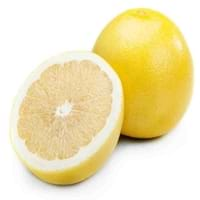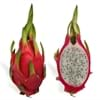Health Benefits
Arthritis prevention, Asthma treatment, Cancer prevention, Kidney stone treatment, Liver health
Cancer prevention, Heart care, Improves eye vision, Reduces stress, Regulation of heart rate
General Benefits
Anti oxidant properties, Boosts immune system, Cures cough, Eye care, Fights against infections, Helps in weight loss, Improves eye vision, Maintains healthy cholesterol level, Treatment of common cold
Anti oxidant properties, Eye care
Skin Benefits
Anti-aging benefits, Brightens and lightens complexion, Reduces wrinkles, Treatment of dark spots
Heals sunburn, Reduces wrinkles, Treatment of skin diseases
Hair Benefits
Prevents hair loss, Protects hair, Regulates hair growth, Treatment of dandruff
Prevents hair loss
Allergy Symptoms
Abdominal pains, Breathing difficulty, Decrease in blood pressure, Diarrhea, Dizziness, Eczema, Hives, Lightheadedness, Nausea, Runny nose, Sneezing, Swelling of mouth, tongue or lips, Vomiting, Wheezing
Abdominal pains, Anaphylaxis, Breathing difficulty, Diarrhea, Dizziness, Hives, Itching, Lightheadedness, Nasal congestion, Nausea, Swelling of mouth, tongue or lips, Tingling sensation in mouth, Vomiting, Wheezing
Side Effects
Allergic reaction
Allergic reaction
Best Time to Eat
As a snack in the late afternoon, Eat the fresh ones, avoid mixing with any other foods, don't eat after meal., Morning time (before lunch), Strictly avoid empty stomach
As a snack in the late afternoon, Eat the fresh ones, avoid mixing with any other foods, don't eat after meal., Morning time (before lunch)
Vitamin B5 (Pantothenic Acid)
Vitamin C (Ascorbic Acid)
Vitamin K (Phyllochinone)
Phytosterol
Not Available
Calories in Fresh Fruit with Peel
Not Available
Calories in Fresh Fruit without Peel
Not Available
Calories in Frozen Form
Not Available
Type
Citrus, Tree fruit
Tree fruit
Season
All seasons
Autumn, Summer
Varieties
Duncan, Marsh and Oro Blanco
Reliance, Sweet Scarlet, Spring Snow, Sugar May, Santa Rosa, Red Beauty, Glowhaven, Cresthaven and Redhaven Peaches
Color
White
Pink, Red, White, Yellow, Yellowish-orange
Inside Color
Creamy Yellow
Yellow
Soil Type
Loam, Well-drained
Sandy loam, Well-drained
Climatic Conditions
Humid, Warm
Cold, Warm
Facts about
- February is known as National Grapefruit Month.
- It is called as state fruit of texas.
- No mechanical devices are used while picking grapefruits, they are always handpicked.
- In china, peaches are considered as a symbol of good luck.
- From 1982, august is National peach month in USA.
- In roman times, Peaches were also called as Persian apples, as people assumed that they originated from Persia.
Other Countries
Argentina, India, Israel, Mexico, South Africa, Sudan, Thailand, Turkey, United States of America
Greece, Italy, Spain, United States of America
Top Importer
Europe
Germany
Top Exporter
United States of America
Spain
Botanical Name
Citrus paradisi
Prunus persica
Synonym
Not Available
Not Available
Subkingdom
Tracheobionta
Tracheobionta
Division
Magnoliophyta
Magnoliophyta
Class
Magnoliopsida
Magnoliopsida
Species
C. × paradisi
P. persica
Generic Group
Citrus fruit
Rose
Difference Between White Grapefruit and Peach
We might think that White Grapefruit and Peach are similar with respect to nutritional value and health benefits. But the nutrient content of both fruits is different. White Grapefruit and Peach Facts such as their taste, shape, color, and size are also distinct. The difference between White Grapefruit and Peach is explained here.
The amount of calories in 100 gm of fresh White Grapefruit and Peach with peel is Not Available and 39.00 kcal and the amount of calories without peel is 33.00 kcal and Not Available respectively. Thus, White Grapefruit and Peach belong to Low Calorie Fruits and Low Calorie Fruits category.These fruits might or might not differ with respect to their scientific classification. The order of White Grapefruit and Peach is Sapindales and Rosales respectively. White Grapefruit belongs to Rutaceae family and Peach belongs to Rosaceae family. White Grapefruit belongs to Citrus genus of C. × paradisi species and Peach belongs to Prunus genus of P. persica species. Beings plants, both fruits belong to Plantae Kingdom.









